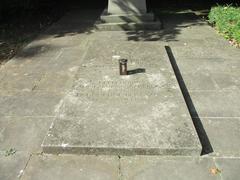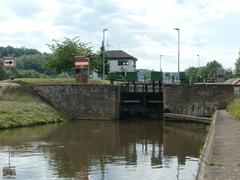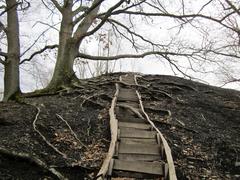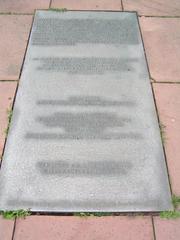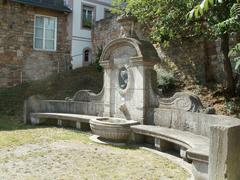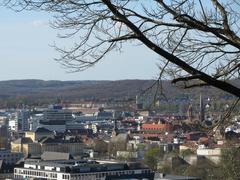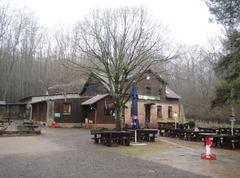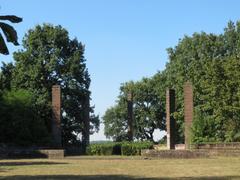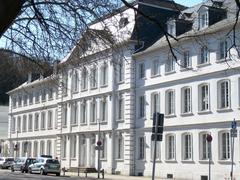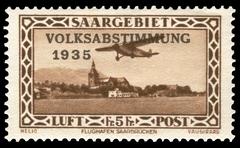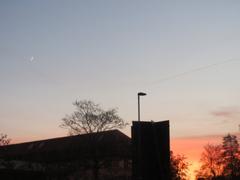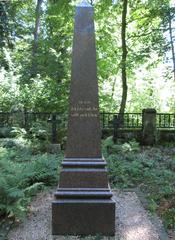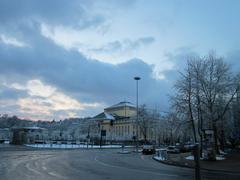
Visiting the Halberg Mithraeum, Saarbrücken, Germany: Comprehensive Guide
Date: 03/07/2025
Introduction
Perched on the scenic slopes of Halberg hill in Saarbrücken, Germany, the Halberg Mithraeum is a rare archaeological site illuminating the ancient Roman mystery cult of Mithras. Carved into natural sandstone, this subterranean sanctuary invites visitors to step back into the 2nd–4th centuries CE, when Roman soldiers and local inhabitants practiced secret rituals within its cave-like chamber. As one of only nineteen preserved Mithraic sanctuaries in Germany, the Halberg Mithraeum is both a cultural treasure and a testament to the region’s dynamic religious history (saarland-lese.de; mithras.tertullian.org).
This guide offers all the essential information for planning your visit: opening hours, ticket policies, accessibility, transportation, nearby attractions, and tips for experiencing this unique site. Whether you’re a history enthusiast or a curious traveler, the Halberg Mithraeum and its surrounding Saarbrücken historical sites promise a memorable journey into the ancient world (tourismus.saarbruecken.de; paganplaces.com).
Table of Contents
- Introduction
- Halberg Mithraeum: History and Significance
- Planning Your Visit
- Exploring Nearby Saarbrücken
- Preservation, Education, and Responsible Tourism
- Frequently Asked Questions (FAQ)
- Conclusion & Recommendations
- References
Halberg Mithraeum: History and Significance
The Mithraic Cult in Roman Saarland
The Halberg Mithraeum represents the spread of Mithraism—a mystery religion originating from Indo-Iranian roots and popular among Roman military and administrative elites—across the empire’s European frontiers. The cult’s appeal stemmed from exclusive initiations, ritual feasting, and the promise of cosmic salvation (mithras.tertullian.org). Established during the Roman period on Halberg’s western slope, the Mithraeum’s strategic placement near garrison settlements and the Saar river underlines its role as a spiritual center for both soldiers and civilians (paganplaces.com).
Architecture and Ritual Space
The sanctuary is carved directly into Halberg’s sandstone, following the archetype of Mithraic temples: a dark, cave-like chamber (spelaeum) designed to evoke the mythic cave where Mithras slew the primordial bull (mithras.tertullian.org). The main chamber measures about 6.5 meters wide and 9 meters deep. Raised benches line the sides of a central aisle, where initiates reclined during ritual meals, and a round depression in the floor may have functioned as a water basin for ceremonies. The entrance, likely shielded from daylight, fostered the mysterious atmosphere essential to Mithraic worship.
Archaeological Finds
Excavations have yielded terra sigillata pottery and coins spanning the reigns from Diocletian to Gratian (late 3rd–4th centuries CE), attesting to the site’s active use in the waning days of the Roman Empire (mithras.tertullian.org). Historical accounts describe impressive columns adorned with priestly figures and symbols, though these artifacts are now lost. A replica of a Mithras tauroctony relief—based on an original from Metz—now stands within the sanctuary (saarland-lese.de).
Religious and Cultural Context
The Mithraeum served as a locus of spiritual and social cohesion for Roman Saarbrücken, especially among soldiers. The cult’s decline paralleled the empire’s Christianization; the site was subsequently repurposed as a Christian hermitage, possibly by Bishop Arnualdus, and later as a pilgrimage destination (gangleri.nl). In the 18th century, it figured in local aristocratic life as a setting for gatherings, further cementing its layered significance (reisen-ist-freiheit.com).
Later History and Transformation
Transitioning from a Roman sanctuary to a Christian refuge and a site of local custom, the Halberg Mithraeum embodies the evolving spiritual landscape of Saarland. Today, maintained by Saarländischer Rundfunk, it is protected and interpreted for public appreciation (gangleri.nl).
Planning Your Visit
Opening Hours & Ticket Information
- Opening Hours: Typically Tuesday to Sunday, 10:00 AM–5:00 PM. Closed Mondays and public holidays. Hours may vary—verify with Saarbrücken Tourism or Saarländischer Rundfunk before your visit.
- Tickets: Entry is usually free. Some special or guided tours may require advance booking and a small fee.
- Contact: +49 681 927200
Accessibility
The Mithraeum is accessible by a short walk through Halberg’s wooded paths. The cave’s uneven, unpaved terrain may be challenging for those with limited mobility; sturdy footwear is recommended. There is currently no full wheelchair access.
Getting There
- Address: Mithraskapelle am Halberg, Brebacher Landstraße 30, 66121 Saarbrücken (reisen-ist-freiheit.com)
- By Public Transport: Buses 104 and 107 stop at “Halberg,” a short walk from the site.
- By Car: Limited parking is available near Saarländischer Rundfunk. Walking or public transport is advisable during busy periods.
Guided Tours and Special Events
Occasional guided tours by local historical societies and cultural institutions provide deeper context on Mithraism and the site’s archaeological discoveries. For schedules and booking, consult Saarbrücken’s tourist office.
Visitor Tips and Photography
- Best Time to Visit: Early morning or late afternoon for tranquil atmosphere and optimal lighting.
- Photography: Permitted without flash; tripods are not allowed inside to protect the environment.
- Facilities: Minimal at the Mithraeum; restrooms and refreshments are available at Saarländischer Rundfunk or in the city center.
Exploring Nearby Saarbrücken
Historical Sites and Museums
- Saarbrücken Castle: A renovated Baroque palace with museum and gardens (explore-the-outdoors.com).
- Roman Museum: Artifacts from local Roman settlements.
- Ludwigskirche and Ludwigsplatz: Iconic Baroque church and square.
- Museum for Pre- and Early History: Artifacts from Stone Age to Roman times.
- Alte Brücke (Old Bridge): Historic stone bridge with Saar river views.
- St. Johanner Markt: Lively old town center with cafes and shops.
Parks and Walking Trails
- Historischer Halberg Trail: A circular walk featuring 19 historic sites, including the Mithraeum (tourismus.saarbruecken.de).
- Staden Park: Riverside green space for relaxation.
- Deutsch-Französischer Garten: Franco-German friendship park.
- Saarbrücken Primeval Forest: Hiking and wildlife just outside the city.
Dining and Refreshments
Local specialties such as Dibbelabbes and Lyoner sausage can be enjoyed at St. Johanner Markt, with many cafes offering outdoor seating.
Preservation, Education, and Responsible Tourism
Heritage organizations and Saarländischer Rundfunk are committed to preserving the Mithraeum and its surroundings. Informational panels and QR codes along the Halberg trail offer historical context, and donations to support ongoing conservation are encouraged. Visitors are asked to respect the site’s spiritual and historical significance.
Frequently Asked Questions (FAQ)
Q: What are the Halberg Mithraeum opening hours?
A: Generally Tuesday–Sunday, 10:00 AM–5:00 PM; closed Mondays and public holidays. Always check for updates online.
Q: Is there an entry fee?
A: Admission is typically free; guided tours may have a small fee.
Q: Are guided tours available?
A: Yes, local organizations offer tours; check schedules and book in advance.
Q: Is the site accessible for visitors with disabilities?
A: Accessibility is limited due to the cave’s natural terrain.
Q: Can I take photos inside?
A: Yes, non-flash photography is permitted; tripods are not allowed.
Q: What other attractions are nearby?
A: Saarbrücken Castle, Roman Museum, Ludwigskirche, St. Johanner Markt, parks, and walking trails.
Conclusion & Recommendations
The Halberg Mithraeum offers a unique glimpse into the spiritual life of Roman-era Saarland and the region’s layered cultural history. Free entry, regular opening hours, and proximity to other Saarbrücken highlights make it an accessible and enriching destination. To enhance your experience:
- Download the Audiala app for audio guides and up-to-date visitor information.
- Plan your route using the Halberg history trail brochure.
- Follow Saarbrücken tourism channels for special events and updates.
By visiting the Halberg Mithraeum, you embark on a journey through the mysteries of an ancient cult and the enduring legacy of Saarland’s past.
References
- saarland-lese.de
- mithras.tertullian.org
- reisen-ist-freiheit.com
- gangleri.nl
- paganplaces.com
- tourismus.saarbruecken.de
- explore-the-outdoors.com





























